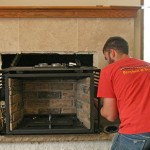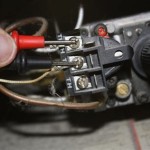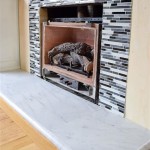Propane Direct Vent Fireplaces: A Comprehensive Overview
Propane direct vent fireplaces offer a convenient and efficient heating solution, combining the ambiance of a traditional fireplace with modern technology. Unlike wood-burning fireplaces that require extensive venting systems and can contribute to indoor air pollution, direct vent models offer a sealed combustion system, drastically improving safety and efficiency. This article will explore the key features, benefits, and installation considerations of propane direct vent fireplaces.
A direct vent fireplace operates by drawing combustion air from outside the home and exhausting the combustion gases back outside through a coaxial vent system. This system consists of two pipes, one inside the other. The outer pipe draws fresh air in for combustion, while the inner pipe vents exhaust gases out. Because the combustion is effectively sealed from the living space, these fireplaces do not require a chimney. This sealed system also prevents the loss of heated room air, which is a common problem with traditional fireplaces. This design contributes significantly to the overall energy efficiency of the unit.
Propane is a clean-burning, readily available fuel source, making it an attractive option for many homeowners. It is a liquefied petroleum gas (LPG) stored in tanks outside the home. Propane offers a consistent heat output compared to natural gas, which can fluctuate in pressure depending on the provider and demand. The readily available nature of propane, even in remote areas, has contributed to the popularity of propane fueled appliances.
Key Advantages of Propane Direct Vent Fireplaces
One of the primary benefits of a propane direct vent fireplace is its enhanced safety features. The sealed combustion system prevents carbon monoxide from entering the home. This sealed system also prevents drafts and eliminates the need for a chimney, reducing the risk of chimney fires. The lack of a chimney simplifies installation and can significantly reduce the overall cost of the project.
Energy efficiency is another major advantage. Direct vent fireplaces are significantly more efficient than traditional wood-burning fireplaces. The sealed combustion system prevents heat loss, and the controlled burning of propane ensures a consistent and efficient heat output. Many models are equipped with features such as thermostatic controls and programmable timers, allowing homeowners to customize their heating and further optimize energy consumption. The BTU output of these fireplaces can vary significantly between models, allowing owners to choose a unit tailored to the size of the room they wish to heat.
Aesthetics are also a significant consideration. Modern propane direct vent fireplaces are available in a wide range of styles and designs, from traditional to contemporary. They can mimic the appearance of a traditional wood-burning fireplace with realistic log sets and glowing embers. Some models offer features such as adjustable flame height and accent lighting, allowing homeowners to customize the ambiance of their living space. This versatility contributes to the popularity of direct vent fireplaces in new constructions and remodels.
Installation Considerations for Propane Direct Vent Fireplaces
Proper installation is crucial for the safe and efficient operation of a propane direct vent fireplace. Installation should always be performed by a qualified and licensed professional familiar with propane gas systems and local building codes. Improper installation can lead to gas leaks, carbon monoxide poisoning, and other safety hazards.
Venting is a critical aspect of the installation process. The vent system must be properly sized and installed according to the manufacturer's instructions. The venting must terminate outside the building in a location that meets code requirements and prevents exhaust gases from re-entering the home. Typically, the vent can terminate through an exterior wall or the roof. The correct type of venting, usually a coaxial pipe system designed specifically for direct vent fireplaces, must also be used.
Gas line installation is another key consideration. A propane gas line must be run from the propane tank to the fireplace location. The gas line must be properly sized and installed to ensure adequate gas pressure and flow. All connections must be leak-tested to ensure they are secure. Safety measures, such as a shut-off valve near the fireplace, are also required.
Maintenance and Safety Practices
Regular maintenance is essential to ensure the continued safe and efficient operation of a propane direct vent fireplace. A qualified technician should inspect the fireplace annually. This inspection should include checking the gas connections for leaks, cleaning the burner and pilot assembly, and inspecting the venting system for obstructions or damage.
The fireplace should also be cleaned regularly to remove dust and debris. The glass front of the fireplace should be cleaned with a non-abrasive cleaner specifically designed for fireplace glass. The log set should also be inspected and cleaned periodically. It is crucial to never use flammable liquids to clean the fireplace.
Carbon monoxide detectors are a critical safety measure. Install carbon monoxide detectors on every level of the home, especially near sleeping areas. Test the detectors regularly to ensure they are functioning properly. If the carbon monoxide detector alarms, evacuate the home immediately and call emergency services.
Understanding the operational nuances, installation requirements, and maintenance protocols ensures the optimal performance and safety of a propane direct vent fireplace, providing homeowners with a reliable and aesthetically pleasing heating solution.

Benefits Of Direct Vent Fireplaces

Empire Dvp42fp31n Tahoe Premium Direct Vent Fireplace

Direct Vent Gas Stoves In Dc

Freestanding High Efficiency Direct Vent Gas Fireplaces Inserts Stoves Godby Hearth And Home

Fire Ribbon Direct Vent Slim Gas Fireplace Spark Modern Fires

Napoleon Elevation Series 36 Gas Fireplace Direct Vent Millivolt I Fireplaces Usa
Understanding How Direct Vent Works Heat Glo

Napoleon Elevation Series 36 Gas Fireplace Direct Vent Electronic Fireplaces Usa

What Are Direct Vent Gas Fireplaces Admiral Propane

Heat N Glo Paloma Direct Vent Gas Stove
Related Posts








